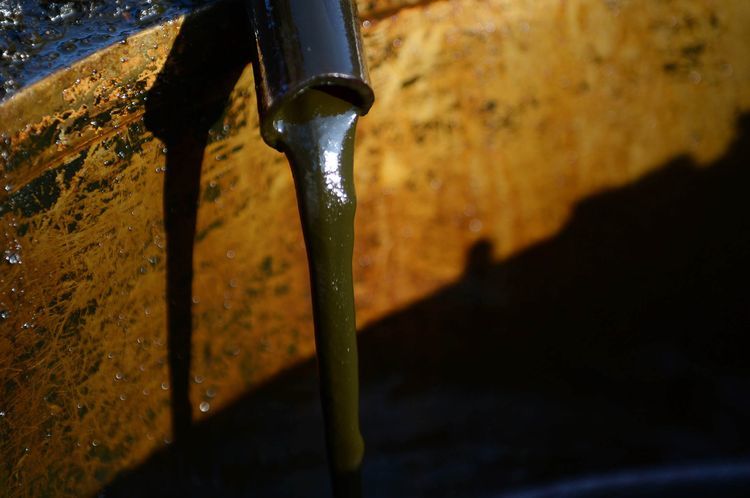
Oil and water are famed for not mixing, but scientists have now discovered they can be forced to combine under special conditions.
A new study suggests that some oily molecules, which normally repel water, can be made to dissolve in the liquid when the two substances are squeezed together under extreme pressure.
Researchers applied high pressure to tiny containers filled with water and methane, creating conditions similar to those found on the ocean floor or inside the planets Uranus and Neptune.
Under a microscope, hydrophobic methane appears as large droplets in water at normal pressure, similar to oil, demonstrating that the substances do not mix.
However, the team found the droplets disappeared at high pressures, indicating that the methane had dissolved.
Edinburgh University researchers used a diamond anvil to apply pressures of up to 20,000 Bars to the methane and water molecules – twenty times greater than the pressure at the bottom of the Mariana Trench in the deepest part of the world’s oceans.
The team believes the methane dissolves because its molecules shrink as pressure is increased, while water molecules stay largely the same, which could allow the compacted methane to fit between the much larger water particles, enabling them to mix.
Dr John Loveday, of the university’s Centre for Science at Extreme Conditions in the School of Physics and Astronomy, said: “This is the first time that methane has been shown to mix with water.
“These exciting findings shed light on how water-repelling substances behave under high pressures, such as those found at the ocean floor or inside planets.
“This could have a huge range of applications, from replacing expensive and environmentally-hazardous industrial solvents to modelling planetary bodies like Saturn’s largest moon, Titan.”
The study was published in the journal Science Advances and was supported by the Engineering and Physical Sciences Research Council and European Research Council.
Recommended for you
